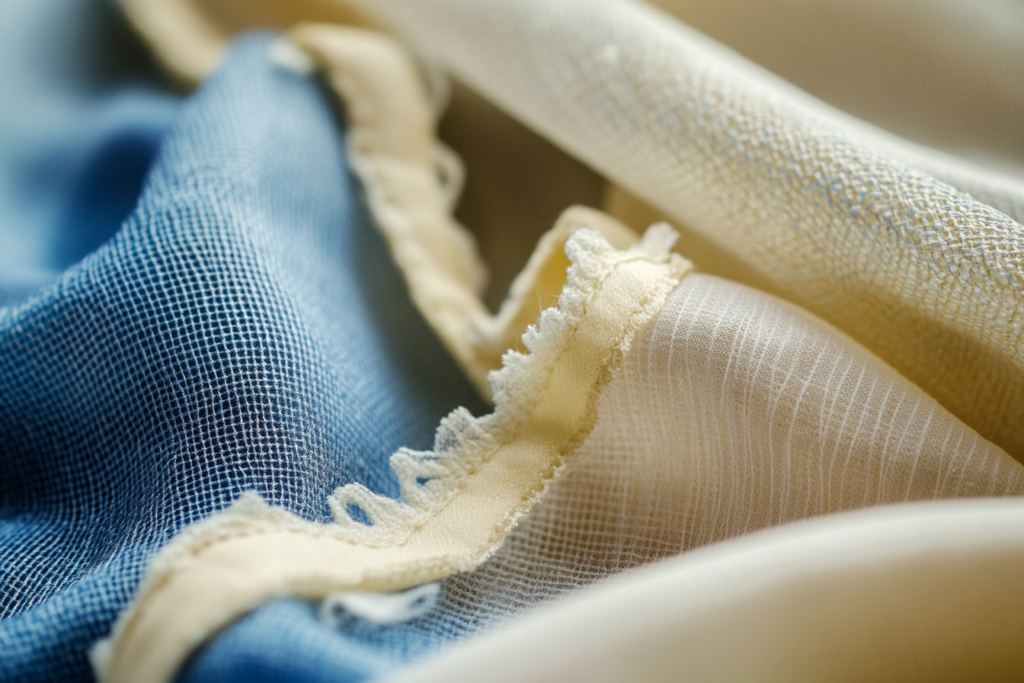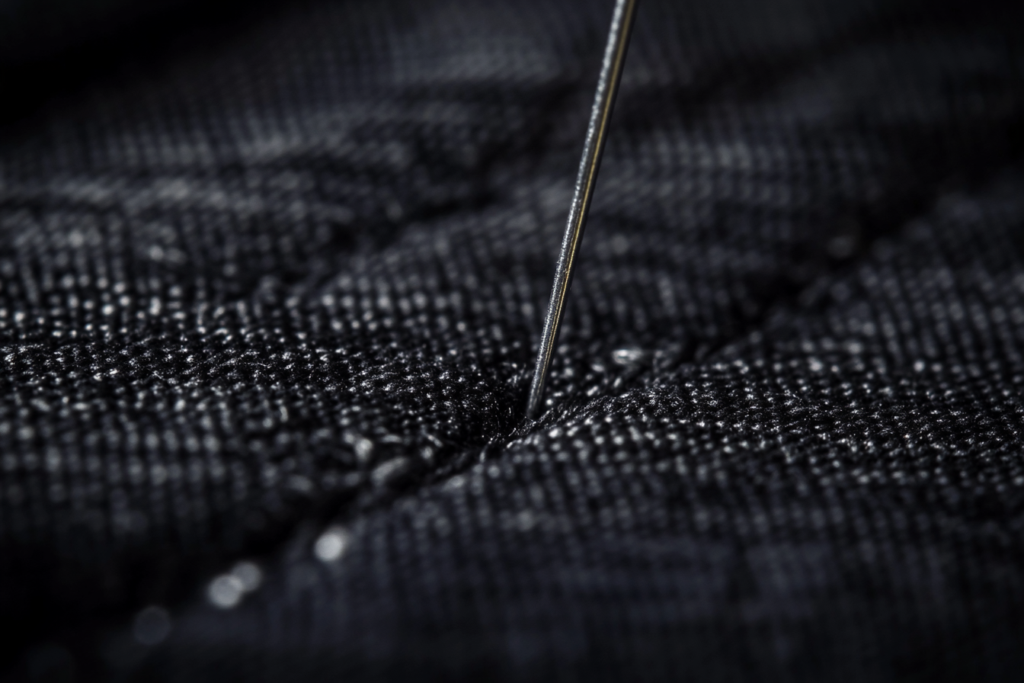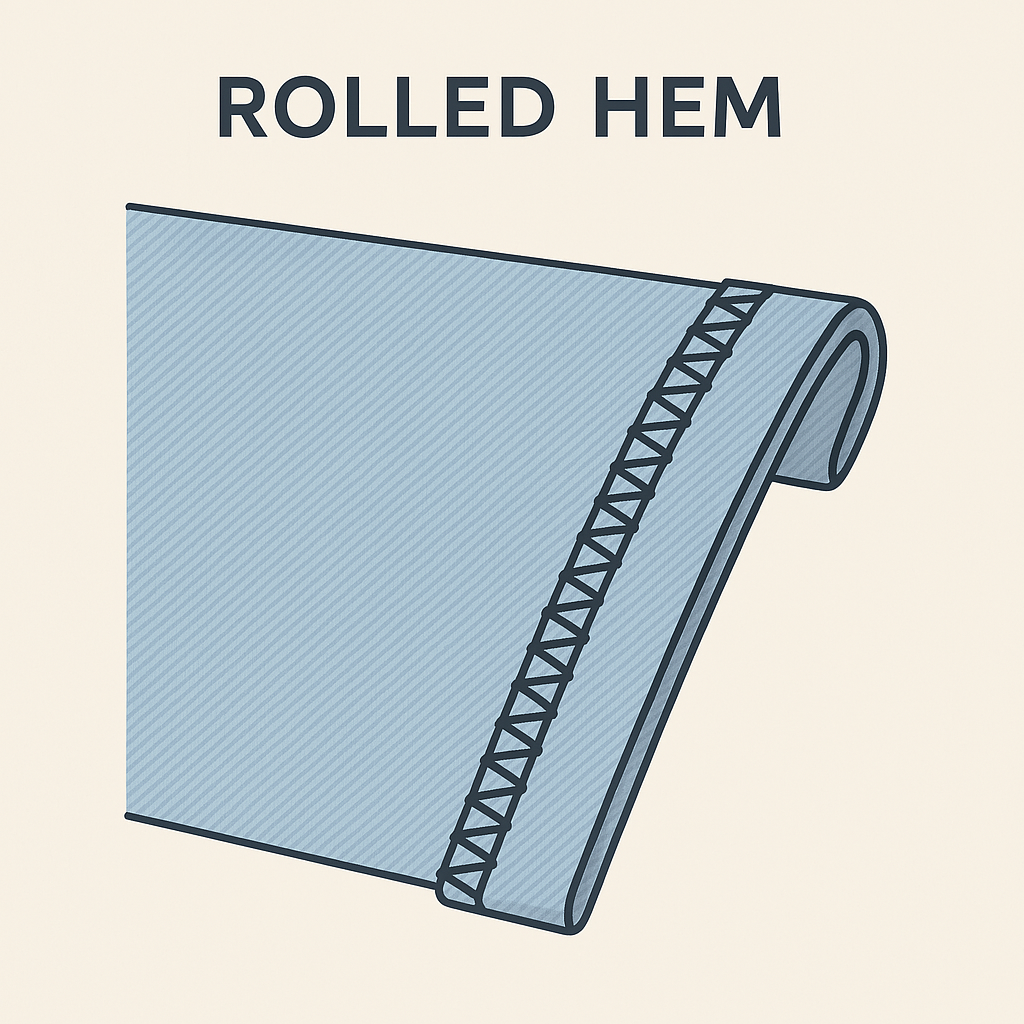Welt in Garment Construction: Edge Finishing, Style, and Structure
🧵 What Is a Welt?
In garment construction, a welt is a fabric strip used to encase or reinforce raw edges, providing a clean and often decorative finish. Welts can be placed on the inside or outside of a garment and made from the main fabric or contrast material. Welting helps stabilize curved or high-wear areas such as armholes, collars, waistbands, and necklines, contributing to both design detail and garment durability.
🪡 Types of Welts and Their Applications
🔸 1. Bias Welts on Armholes & Collars
- Bias-cut strips are used to follow curves like armholes or neck openings
- When stitched visibly, they create coordinated design elements across the garment
- Often applied in garments where structure meets decoration
📌 how visible stitches on the collar match those on the armhole for design consistency.
🔸 2. Shaped Welts with Decorative Stitching
- Wider welts at the armhole or collar are often secured with visible decorative stitching
- Can be cut in twill shapes or directional curves to highlight design lines
- Common in zip-up shirts, dresses, and sporty silhouettes
📌 features a shaped twill welt stitched visibly on a zippered front shirt.
🔸 3. Blind-Stitched Welts for Clean Finish
- Welt is tucked inward and secured with blind stitches
- Seam is invisible from the outside and visible only on the inside
- Ideal for high-end blouses, women’s boat necklines, or delicate finishes
📌shows this technique on a women’s bateau neckline—refined and subtle.
🔸 4. Waist Welts in Seam-Free Styles
- Welts can also shape the waist in garments without traditional waist seams
- Bias-cut welts match body curves while maintaining garment stability
- A woven strip inside reinforces the seam, maintaining shape and preventing stretch
📌 shows a bias welt at the waist of a fitted dress; 10.23b shows a welt attached at the dart and side seam, invisibly bonded.
👗 Welt Use Table by Garment Area
| Garment Feature | Welt Type | Stitch Style | Fabric Type | Visibility | Notes |
|---|---|---|---|---|---|
| Armhole | Bias Welt | Visible Stitch | Woven / Knit | Visible | Coordinated with collar for design unity |
| Collar | Shaped Welt | Blind or Visible | Woven (Shirtweight) | Optional | Clean neckline, can emphasize shape or trim |
| Zippered Front Shirt | Twill Welt | Decorative Stitch | Twill / Poplin | Visible | Adds sporty or technical feel |
| Neckline (Boat Neck) | One-piece Welt | Blind Stitch | Lightweight Woven | Hidden | Refined finish with less bulk |
| Skirt/Pants Waist | Bias Welt with Tape | Bottom Seam Visible | Woven / Stretch Woven | Partial | Shapes waist without traditional seam |
| Side Seam Join | Overlocked Welt | Invisible Bond | Garment-matched | Hidden | Anchors welt discreetly to dart and side seam |
🔧 Key Advantages of Welting
✔️ Reinforces curved or stretched fabric areas
✔️ Offers design continuity across visible seams
✔️ Helps manage fabric thickness and seam structure
✔️ Customizable in width, shape, and stitch visibility
✔️ Works for both inside and outside edge treatment
🔍 When to Use Welts
- When the garment edge requires reinforcement without bulk
- To hide raw seams or create clean, polished edges
- In curved areas like armholes, necklines, or waist without darts
- As a decorative design line, especially in structured pieces
- For tailoring techniques in both women’s and men’s garments
📌 Summary
Welts are a highly adaptable garment construction detail, used to strengthen, shape, or decorate garment edges. Whether you’re using a bias welt on an armhole, a decorative twill welt, or a blind-stitched neckline finish, welts offer precision and polish. With proper technique—visible or invisible—they contribute to both fit and finish, making them a staple in professional garment making.




